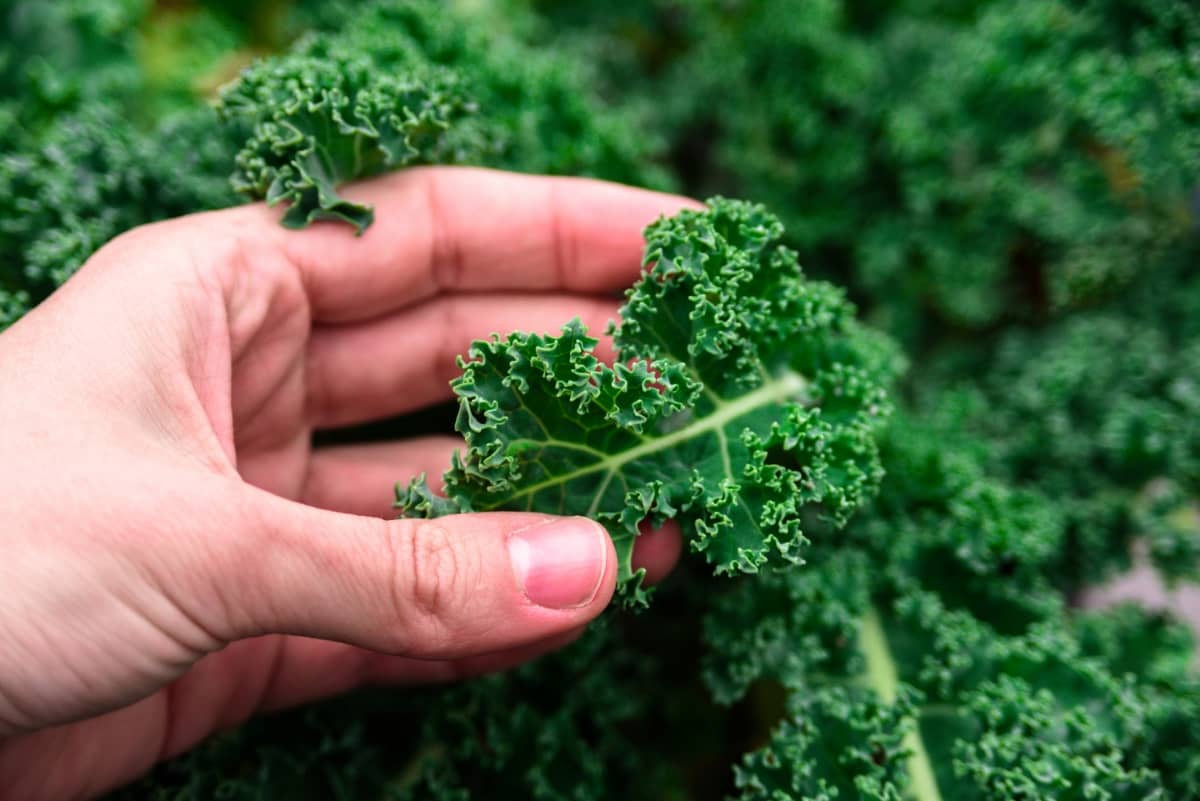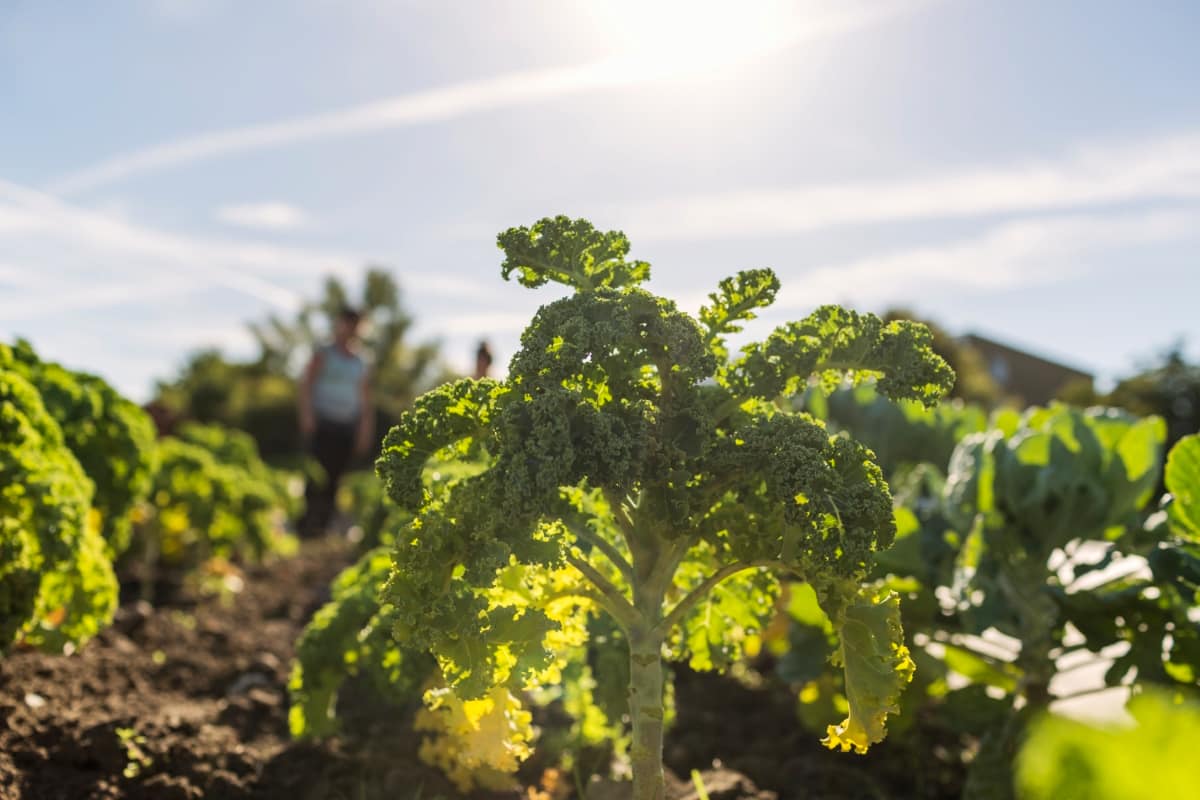Throughout the past decade, kale has gained a reputation for being a nutritious and delicious green crop. In this situation, you’ll want to know why your kale plants are dying and what to do to fix them. There are several reasons why kale plants turn yellow, including overwatering, high temperatures, and a lack of nitrogen. A bacterial infection is also possible. To provide your kale with the healthiest possible start, let’s examine the possible causes of young kale seedlings turning yellow.

7 Causes of Dying Kale
Due to Incorrect Planting Location
Planting your garden in the wrong place may result in your kale plants not growing. If your plants are not growing well, try moving them. Most kale plants should be planted in full sun, but they may benefit from partial shade in warm regions so they won’t be scorched by the sun.
Proper watering and pH imbalance can also stunt the growth of kale plants. If you want to grow kale, the pH should be between 5.5 and 6.8. Use a home testing kit, such as one available at home improvement stores. The use of limestone is a great way to reduce the acidity of the soil. You can use sulfur to raise the pH if you need it.
Seedlings Might Die Due to Lack of Nutrients Or Damping Off
Seedlings of kale can develop yellow leaves for several reasons. However, the most common is a nitrogen deficiency in the soil. Second, stem and roots rot due to a soil-borne fungal disease called damping off. You can distinguish between the plant’s base by looking at the two. Fungi usually cause yellowing if you notice that the stems are thinned out or dried out.
As a result, the plant will die in this case, as the condition is irreversible. Rotate crops and avoid growing cabbage family plants in this spot in the future. It will first be noticeable on the lower leaves if the seedlings lack nitrogen or other nutrients. While your kale plants are still in the vegetative stage, it is recommended that you feed them an organic liquid fertilizer every 2-3 weeks.
Due to High Temperatures
Sometimes people forget that kale belongs to the cool-weather crops. It thrives best at temperatures below 21°C and struggles at temperatures much higher than 24°C. You might find your kale seedlings too warm if you keep them indoors for too long. As a result, those early leaves of the kale plant can turn yellow, eventually causing the plant to die. Generally, kale seeds need four to six weeks to prepare for the great outdoors if grown indoors.
If you plant them during a relatively cool period, such as late Summer or early Spring, they should thrive in the cool temperatures and space they need. During unseasonably warm weather, you can try protecting seeds from the sun to cool them down if growing from seed outside. A partial shade cover for fixed beds can be helpful, or if you are growing in pots, you can simply move them indoors or to a cooler spot in the garden.
Due to Underwatering
Kale plants will droop their lower leaves when they lack water as a natural reaction to move nutrients and water to their growing points. If kale is constantly under water stress, the quality and quantity of the leaves will be diminished. Applying a 5 to 6-cm thick layer of mulch around the plant can improve the soil’s ability to retain water and promote root development. Don’t overdo it; use the proper mulch that won’t generate too much heat during the composting process and will still let water into the soil when irrigated.
In case you missed it: 7 Causes of Dying Plants in Hydroponics and How to Fix Them?

Due to Overwatering
Contrastingly overwatered plants will lose their fine roots, which absorb minerals, nutrients, and water. After a heavy storm or if the soil is waterlogged, this can also happen in heavy soil with high water retention. Compost can improve the drainage capabilities of soil and prevent it from becoming waterlogged. When there is a rainstorm, and you are watering your plants 1-2 times per week, stop watering the plants for a few days until the soil dries out.
Due to Various Bacterial Diseases
There are also bacterial diseases that produce yellow leaves and eventually die off, but the leaves are not uniformly yellow like in previous cases. Black rot, Xanthomonas leaf spot, and bacterial leaf spot are the most common bacterial diseases. It usually appears as small circular spots covered in yellow border and scattered over the leaves; when the spots come together, they cause larger areas of the leaves to turn yellow.
There will be V-shaped lesions on the margins of the leaf if the leaf has black rot. You can do several things in case of a bacterial attack on your plants. You should avoid watering your plants from above; bacteria will proliferate on wet leaves and spread when splashed on other parts of the plant. Additionally, you can spray a liquid copper fungicide or a Bacillus subtilis product to control the problem organically.
Insects Like Aphids Or Thrips
Insects can also kill kale plants by producing yellow leaves. The aphids and whiteflies will colonize the leaf’s underside and feed on the sap of the leaves. They will appear in the tender leaves first. Insects such as spider mites and thrips also damage the leaves by scraping and feeding on them. Because you can actually see the culprits, they are easier to diagnose.
In case you missed it: 7 Causes of Dying Orchids and How to Fix Them?

A floating-row cover prevents these pests from reaching your kale plants, so you can avoid being attacked by them. When you detect their presence, use organic insecticides such as neem oil, diatomaceous earth, or insecticidal soap.
Conclusion
Growing kale in your garden can be easy. By knowing the potential issues you may encounter while growing kale, you are prepared to handle any situation that arises. It’s now time to grow as much kale as you can. Our best wishes for your kale growth.
- Feed Your Flock for Less: Top 10 Tips to Save on Chicken Feed
- Ultimate Guide to Ossabaw Island Hog: Breeding, Raising, Diet, and Care
- Hatching Answers: The Top 10 Reasons Your Chickens Aren’t Laying Eggs
- Eggs and Economics: Breaking Down the Cost of Raising Backyard Chickens
- Defend Your Greens: Proven Methods to Keep Iguanas Out of Your Garden
- Ultimate Guide to Cinnamon Queen Chicken: A Comprehensive Guide for Beginners
- Ultimate Guide to California Tan Chicken: Breeding, Raising, Diet, Egg-Production and Care
- Ultimate Guide to Marsh Daisy Chicken: Breeding, Raising, Diet, and Care
- 10 Types of Chicken Farming Businesses You Can Start for Profits